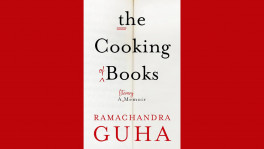The birth of a new political constituency
“We have arrived,” proclaimed a string of Indian Americans in news profiles of the community’s sudden shot into prominence politically

A record 160 million Americans are estimated to have voted by close of polling on November 3. Around 1.9 million of them may have been Indian-Americans, assuming all who were eligible to vote did indeed register on time and cast their ballots. In other words, if Americans have spoken, that barely audible whisper you nearly missed could be the Indian-Americans, at 1.2% of the turnout.
It's too early to assess their impact on the polls and if they did, or did not, live up to expectations of them by the campaigns of United States (US) President Donald Trump and Democratic nominee Joe Biden. But an adviser to one of the campaigns insisted that the community played an "unprecedented" role in the battleground states of Nevada, Michigan, Pennsylvania, Arizona, North Carolina, and Virginia.

While that claim will have to be verified, what is clear is this: The 4.5 million Indian-Americans, widely recognised as the best-educated and most prosperous community, are unlikely to remain unchanged by the scale and intensity of politics they welcomed into their living rooms through Zoom and WebEx these past months.
An American constituency has been born, a little unsteady on its feet and wobbly, but an unmistakably political being. The process began with writing cheques for grin-and-grip pictures with politicians, moved to members of the community taking shots at elected office, and then beyond. From just Dalip Singh Saund in 1956, the number of Indian-Americans in US congress has risen to five — Kamala Harris in the Senate and Ami Bera, Pramila Jayapal, Raja Krishnamoorthi and Ro Khanna in the House of Representatives. But 2020 is when politics came into their homes, touched their festivals and their culture.
It has no boundaries. So no, it does not live in or around Edison, New Jersey, that American knock-off of a typical Indian city. It does not have a defining language, culture or cuisine, or a profession. They may be bound together, however, by a shared and unifying goal: An ambition to be recognised, accepted and courted politically.
"We have arrived," proclaimed a string of Indian Americans in news profiles of the community's sudden shot into prominence politically. Two surveys — one small and one large, in that chronological order — analysed their demographics, politics and priorities. One showed a significant shift towards Trump, from 16% support in 2016 to 28% in 2020. The next survey showed a more limited rise in support from the same base of 16% to 22%.
Nikki Haley, widely believed to be preparing for a White House run, might have captured the new mood and spirit best, at a non-political event recently. "We have to not be so shy... but also go out there and try and share what we know we can be good at, and I think that there's a lot of different aspects from business to education to health care, everything in between that we can share that will add to this country and make people prouder of the Indian community that is here."
Yashwant Raj is the Editor of Hindustan Times North America Bureau.


 Keep updated, follow The Business Standard's Google news channel
Keep updated, follow The Business Standard's Google news channel
















